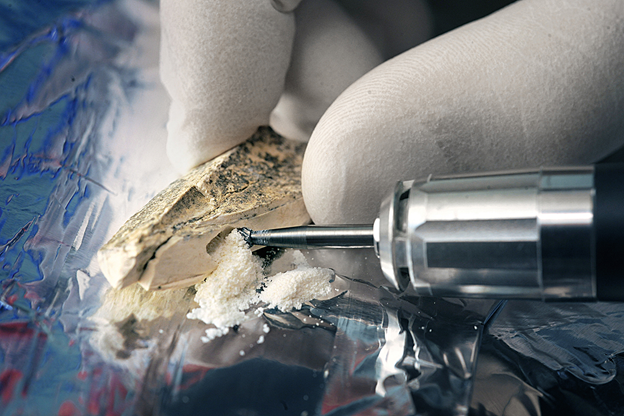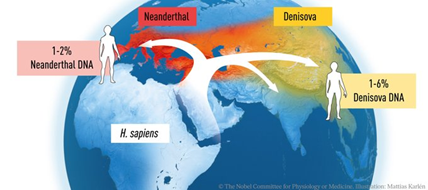Palaeogenomics: Explaining our Origins
-
Context

The Nobel Prize for Physiology this year has been awarded to Svante Pääbo, a Swedish geneticist, who pioneered the field of palaeogenomics.
-
What is palaeogenomics?
- Pääbo’s seminal research gave rise to an entirely new scientific discipline; paleogenomics.
- The palaeogenomics (ancient DNA) field can be defined as the recovery and analysis of genetic material from the biological remains of the past.
- It has become a powerful scientific field that provides direct information about the evolutionary process through space and time.
-
What is the significance of Pääbo’s work?
- Pääbo has, over three decades, devoted himself to three scientific disciplines: palaeontology, genomics, and evolution.
- The study of ancient humans has historically been limited to analyzing their bones and objects around them such as weapons, utensils, tools, and dwellings.
- But Pääbo pioneered the use of DNA, the genetic blueprint present in all life, to examine questions about the relatedness of various ancient human species.
- He proved that Neanderthals, a cousin of the human species that evolved 1,00,000 years before humans, interbred with people, and a fraction of their genes — about 1-4% — live on in those of European and Asian ancestry.

- He also made the sensational discovery of a previously unknown hominin, Denisova.
The Denisovans or Denisova hominins are an extinct species or subspecies of archaic humans that ranged across Asia during the Lower and Middle Paleolithic. Denisovans are known from few physical remains and consequently, most of what is known about them come from DNA evidence. - Svante Pääbo found that gene transfer had occurred from these now-extinct hominins to Homo sapiens.
- This ancient flow of genes to present-day humans has physiological relevance today, for example affecting how our immune system reacts to infections.
A study co-authored by Svante Pääbo and Hugo Zeberg linked an increased risk of severe respiratory failure following COVID-19 with a set of genes that are inherited from Neanderthals and is present in 50% of South Asians and 16% of Europeans. Extraction of DNA from fossils:
- The challenge with extracting DNA from fossils is that it degrades fairly quickly and there is little usable material.
- There is a possibility that these fossils might have passed through several hands, so the chances of them being contaminated by humans as well as other bacterial DNA get higher. This has been one of the major stumbling blocks to analyzing DNA from fossils.
- DNA is concentrated in two different compartments within the cell:
-
- The nucleus: Nuclear DNA harbors most of the genetic information.
- The mitochondria: The much smaller mitochondrial genome is present in thousands of copies and therefore more retrievable.
- With his techniques, Pääbo managed to sequence a region of mitochondrial DNA from a 40,000-year-old piece of bone.


